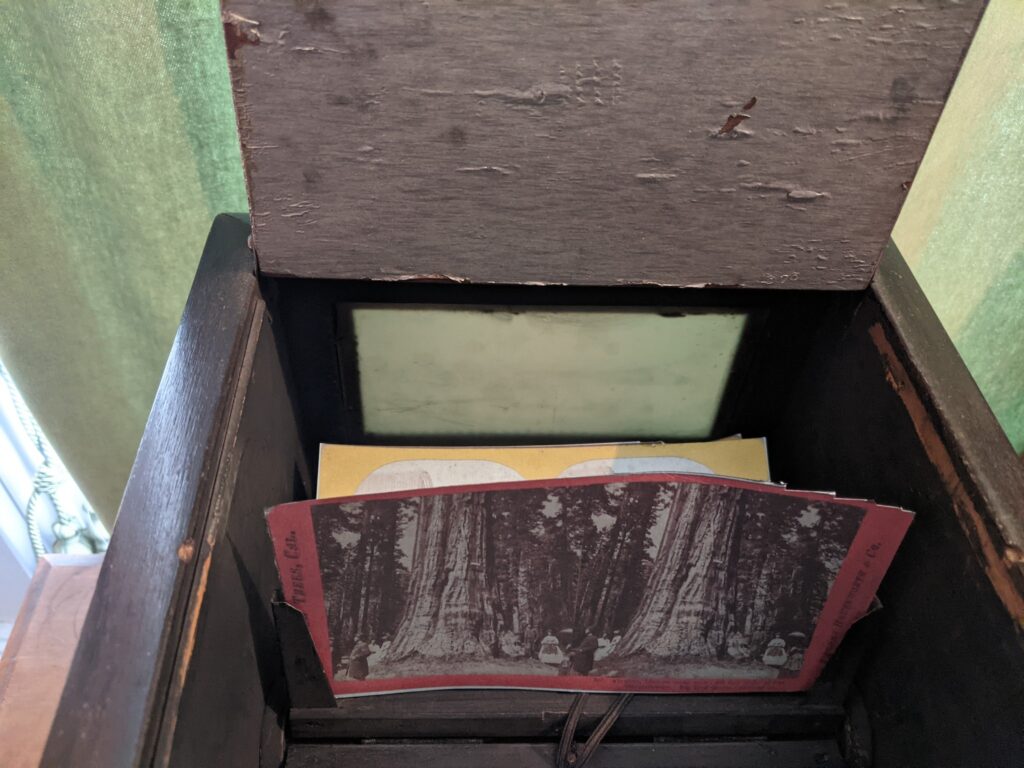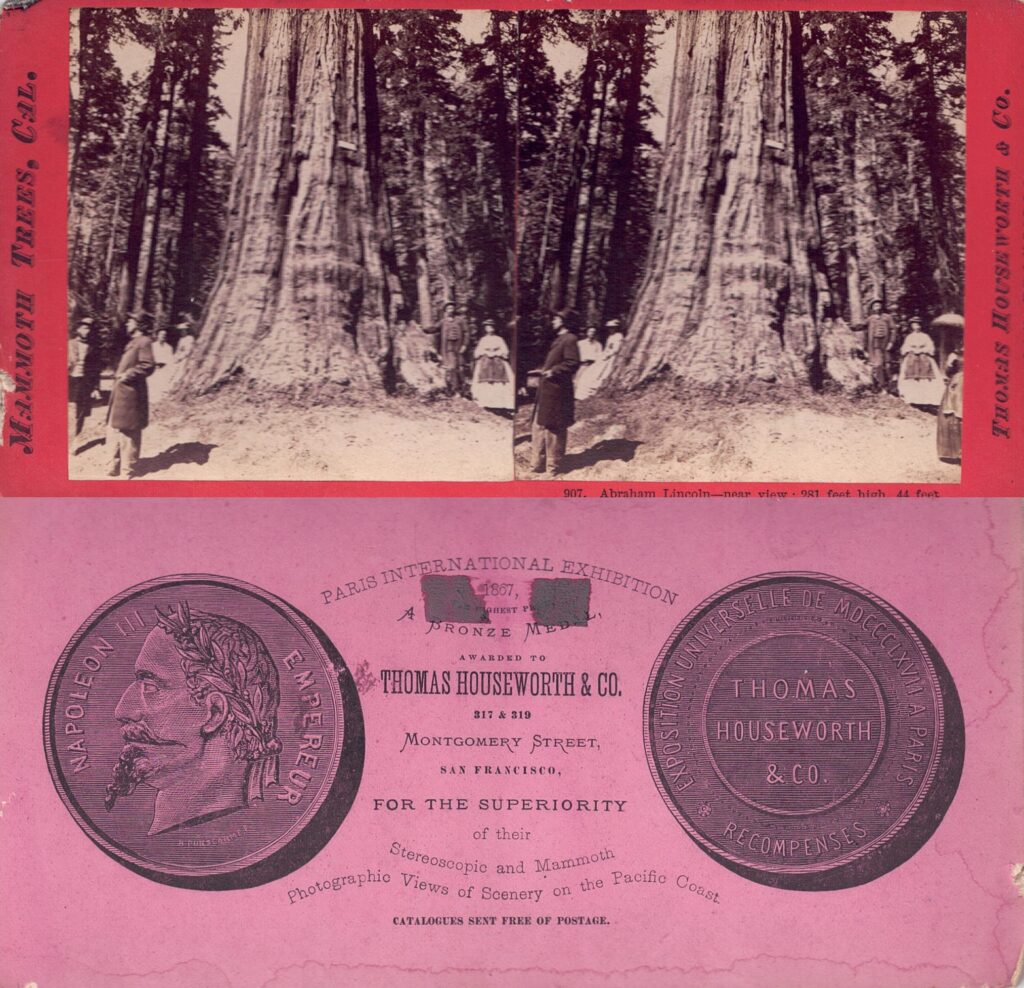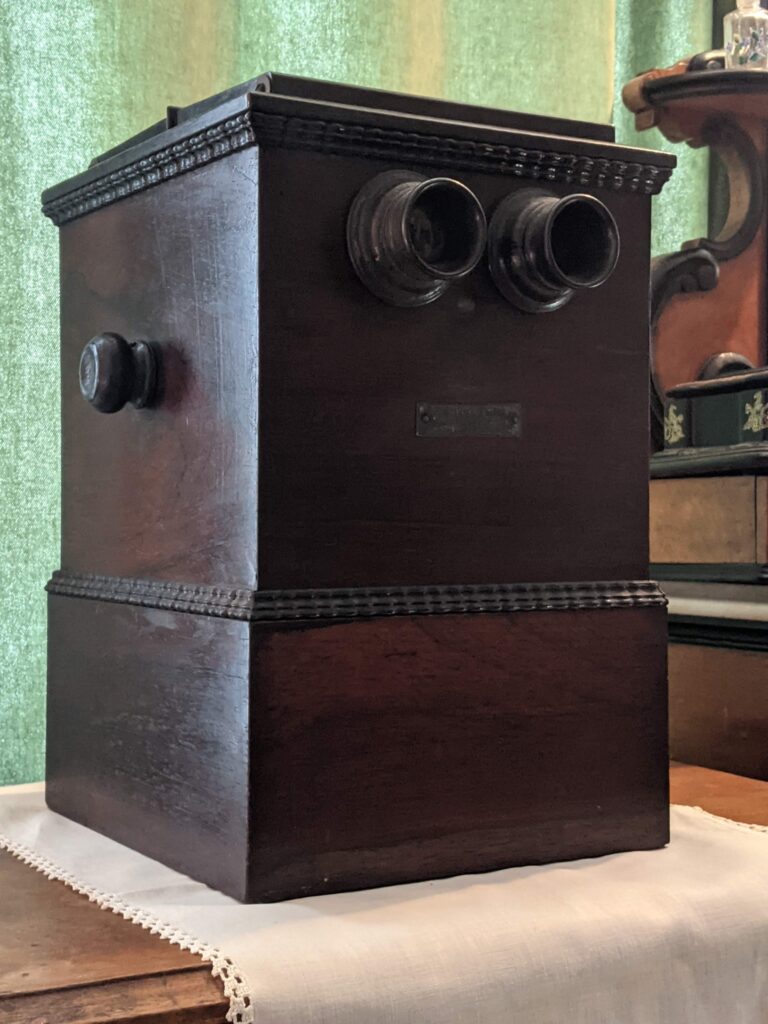Snow doesn’t last forever but a picture can save a memory for 100 years, and two pictures can save the memory in 3D! This stereoscope card from 1888 of children playing in the snow uses two pictures to make the illusion of a three dimensional image. Stereoscope cards use two photographs from slightly different perspective to create this illusion. The photographs are taken about 2.5 inches apart, the average distance between a pair of pupils. When your eyes see these two perspectives through a stereoscope viewer your brain puts the images together, just as it would put together what it sees in front of you. This provides the illusion of depth.
The earliest stereoscope experiments were done in 1832 with drawings, before photographic processing became available. By the 1860s both photographic and stereoscope technology had advanced far enough that stereoscopic viewers could be found in most middle and upper class households. Not just toys for children, stereoscopes were popular ways to see the world from the parlor. People could see exotic locations, and slides were even made of major disasters like the San Francisco earthquake of 1906. Cameras in the mid to late 1800s were less portable than they are now. Few people who were not professional photographers owned one, so stereoscope cards became popular souvenirs for travelers. Educational sets were made to be used in classrooms and wealthy families even had 3d portraits made.
At the Avery-Copp House we have a Becker Viewer. Unlike handheld stereoscopes this machine can hold many 3D slides that the viewer can rotate through. It is one of the many historic artifacts that guests can interact with when they visit the house.


